There are around 200 different varieties of goldfish of different shapes and sizes, so it’s no surprise that these beautiful fish make such popular pets and ornamental goldfish pond fish.
But can goldfish live alone, or are goldfish schooling fish?
Today, most people who enjoy goldfish keeping know that you should not keep a solitary goldfish in a bowl. In fact, in many countries, that’s actually illegal! Although goldfish are not strictly schooling fish, they do need to live in groups or at least in a pair because these are extremely social fish that need the company of their own kind to thrive.
Keep reading to learn more about the social nature of the humble yet beautiful goldfish!
Are Goldfish Schooling Fish?
Although you’ve probably seen groups of larger goldfish swimming around in ponds, the first thing to understand about goldfish behavior is that these are not considered to be schooling fish.
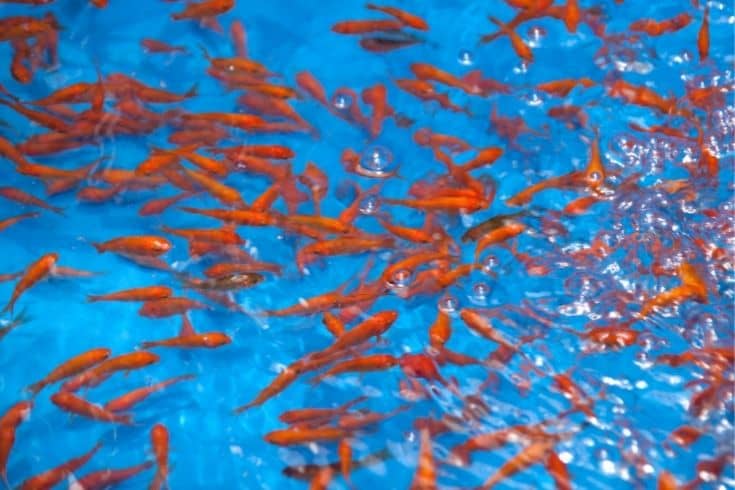
Goldfish are undoubtedly highly social fish that do best when kept in groups or large shoals. However, these fish can be independent, especially as they age, and will happily spend time alone or with a favorite “friend” outside the main group.
Crucially, you should never keep one single goldfish alone. Although these fish can survive without company, they don’t thrive. In fact, it’s actually illegal in some countries, including Switzerland and parts of Italy, to keep these fish alone!
So, providing company for your fish goes a long way to ensuring they live a longer, healthier life.
What’s The Difference Between Schooling And Shoaling Fish?
You’ll often hear people referring to schooling and shoaling fish in the same sentence, but the two terms actually mean different things.
Schooling
School fish live in tight groups, swimming together in a coordinated, synchronized way. The fish tend to swim in formation, sometimes appearing to move as one, even when one fish makes a sudden change of direction.
These fish are typically prey species, such as herring, anchovies, and sardines, and they use the schooling behavior to provide “safety in numbers.”
Shoaling
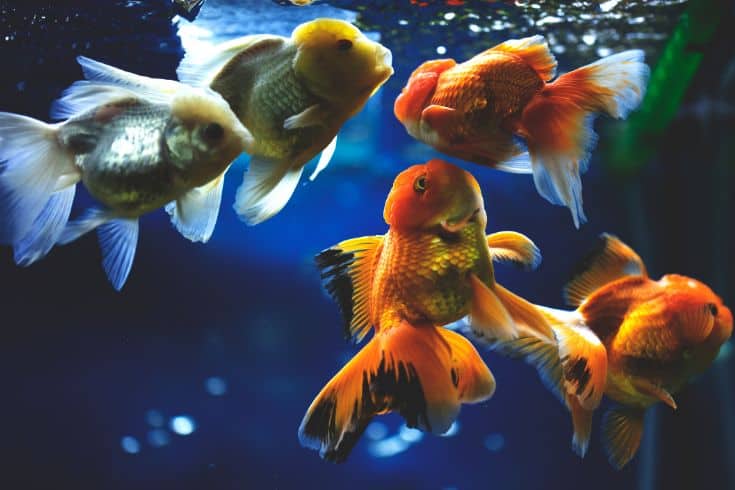
Fishes that shoal tend to swim in loose groups that lack the coordination of schooling fish. These fish swim in the same general direction while keeping their distance from each other, which provides safety for individuals within the group.
Goldfish, barbs, Koi, and tetras all fall within that shoaling demographic.
Both schooling and shoaling behaviors provide benefits to the fish, typically offering protection against predators, making the process of foraging for food more efficiently, and providing ready spawning opportunities.
In addition, many fish also seem to enjoy the presence of others around them, which is thought to reduce stress and promote better overall health.
Goldfish Loneliness?
Although you can keep goldfish alone, I don’t recommend it. These are proven social fish, and keeping one on its own is actually considered to be quite cruel in many countries.
If you only have the space to keep one goldfish in your aquarium, you must include a few suitable tank mates to keep it company to prevent boredom, stress, and depression from affecting your fish’s health.
Can Goldfish Get Depressed?
Goldfish are not known to have feelings as we do, but changes in certain behaviors can identify depression in fish.
For example, a goldfish that’s unhappy or depressed often becomes very lethargic, stops eating, hides away in secluded areas of the tank, and becomes uncharacteristically tetchy with other community members.
Death Of Partner
I once kept four fancy goldfish in a large aquarium in my living room. I rescued the fish together as juveniles, and they lived in a loose group or shoal. Sadly, two of the youngsters didn’t thrive and died within a couple of years. However, the remaining two grew to a good size and lived for almost 12 years.
When one of the fish died, the other exhibited behaviors that clearly indicated depression or even grief! The remaining fish stopped eating, spent most of his time sitting on the tank bottom, barely moving, and stopped digging around in the substrate, which was completely out of character.
I triple-checked the water quality in the tank and inspected the fish for any signs of disease or injury, finding nothing untoward. So, I tried to tempt the fish to eat by offering him all his favorite treats, but he wasn’t interested. I even bought some new plants for the tank, hoping that might spark some interest, but to no avail.
Additional Goldfish
As a last resort, I went to my local fish store and bought two large juvenile fancy goldfish to keep my original fish company. But he showed no interest in the newcomers whatsoever, instead blatantly avoiding them.
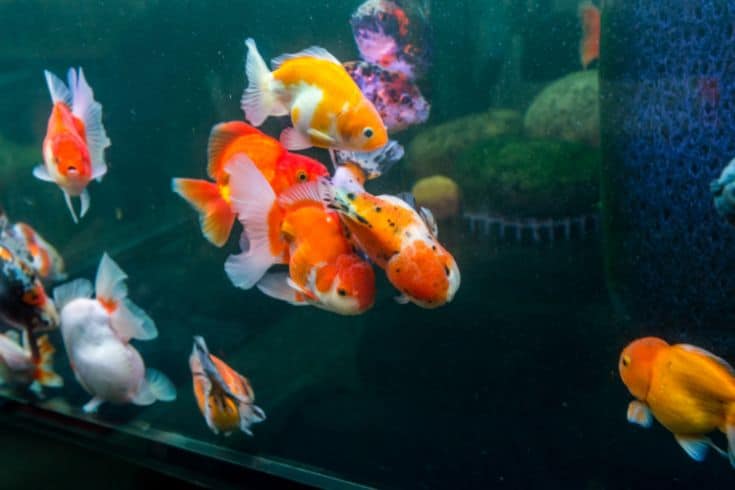
One morning, a couple of weeks after losing the first fish, I came downstairs to discover the living goldfish dead from no obvious cause. From that, I concluded that goldfish can experience grief and could even die of a broken heart.
Do Goldfish Get Bored?
Although it’s hard to tell if goldfish are bored, we know that they get stressed and show behavioral behaviors if kept in an unsuitable environment or one that’s devoid of any decorations.
As mentioned earlier, goldfish need to live in a spacious tank with companions. In addition, I know from experience that goldfish enjoy foraging for food, digging in the substrate around plant bases, nibbling on algae, and exploring their tank. If you keep your goldfish in an environment with no enrichment or company to stimulate them, they do become bored.
Bored goldfish are typically inactive and can stop showing an interest in their surroundings, even stopping eating, which is not at all normal for these notoriously greedy fish!
How To Keep Your Goldfish Entertained
So, what can you do to keep your goldfish happy and entertained?
Provide A Spacious Environment
Goldfish of all varieties need plenty of space to swim. Ideally, you want a long, rectangular tank rather than a tall one, although the actual size of the aquarium depends on the size, age, and number of the goldfish you want to keep, as mentioned earlier.
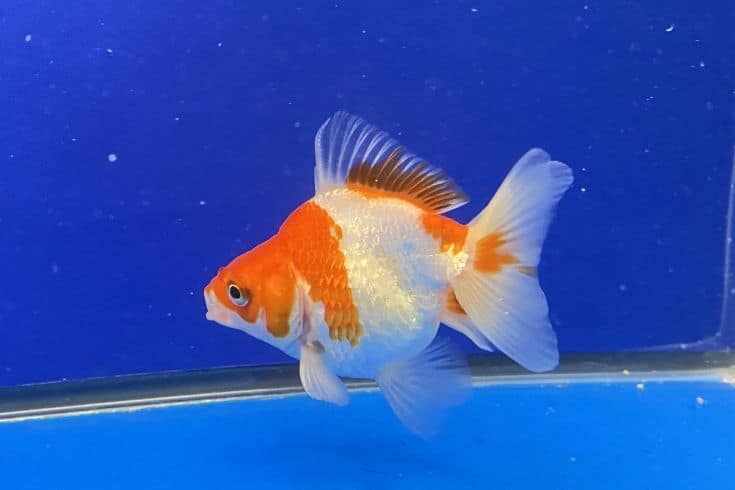
A spacious tank encourages your goldfish’s natural behaviors, too.
Include Lots Of Decorations
Be sure to include plenty of decorations in your goldfish tank!
I prefer the natural look in my tanks, so I have some pieces of driftwood, smooth stones, and a couple of rocky outcrops that the fish love to nibble on. Do check that your decor doesn’t have any sharp edges or rough surfaces that could injure your fish, though.
Change It Up!
Living in the same environment day after day gets kind of monotonous for your fish, so it’s a good idea to switch things around periodically.
You can create a whole new environment simply by moving your decorations around and including a new one or two every now and then.
That strategy works very well with goldfish but isn’t so good for territorial fish such as betta fish, as moving their familiar landmarks can lead to a loss of sense of insecurity and confusion, which stresses the fish.
Use Floating Toys
Goldfish are quite nosey and love to investigate unfamiliar objects floating on the water’s surface, such as ping pong balls or anything smooth that floats, provided the material doesn’t affect the water quality.
Hide And Go Seek
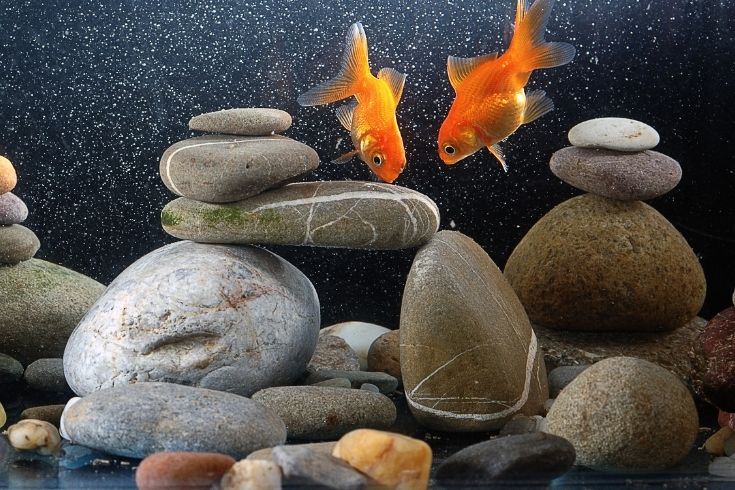
If you watch goldfish living in a pond, you’ll know that they spend much of their time hiding away among the plants and structures in the deeper water. You can recreate that environment in your fish tank by creating rocky overhangs, tunnels, and natural sheltering spots using driftwood surrounded by thick plants.
Live Plants
I love to keep living aquatic plants in all my fish tanks! Plants not only look great, but they provide valuable dissolved oxygen and take up carbon dioxide and nitrates, helping to keep the water healthy and safe for your fish.
Goldfish are known to be plant nibblers, and their digging habits can uproot some plant species, so I recommend using robust plants, those that you can grow on pieces of wood and rock, as well as a few floating varieties. As long as you don’t mind caring for the plants, your goldfish will enjoy foraging among them and grazing on any algae that grow on the leaves.
Interactive Feeding
You can make feeding times more interesting for your goldfish by using a food-dispensing device, offering your fish small portions of food multiple times during the day, and varying the feeding area.
That encourages natural foraging behavior, helping to keep the goldfish busy and occupied throughout the day.
Do Goldfish Need Tank Mates?
I would say that goldfish definitely need tank mates. As previously mentioned, these are highly social fish that I think do much better when kept with others of their own kind, ideally with similar varieties in a large tank or pond.
That said, you can keep other species of fish and other aquatic life with goldfish as long as you choose them carefully.
What To Consider When Keeping Other Fish With Your Goldfish
There are several factors to consider when choosing tank mates to live with your goldfish.
- Choose types of fish of a similar size to your adult goldfish so that the goldfish don’t view their companions as a potential food source.
- Goldfish need cold water, and their water chemistry requirements are often different from tropical species. So, be sure to pick tank mates that enjoy the same water conditions as the goldfish.
- Goldfish are usually peaceful fish, although juveniles can sometimes nip slow-moving or long-finned fish.
- Goldfish produce lots of waste, so try to go for fish that are cleaner to reduce the burden on your filter system and avoid carnivorous fish whose diet tends to create a lot of mess.
Ideal Tank Mates For Goldfish To Avoid Loneliness
Good tank mates for goldfish can include non-aggressive fish, such as White Cloud Mountain Minnows, Corydoras catfish, Suckermouth catfish, Zebra danios, and Bristle Nose plecos.
What Are The Worst Tank Mates For Goldfish?
Avoid any highly territorial, aggressive fish species that could bully and stress the goldfish. In addition, very small fish and shrimp can be viewed as a potential food source by the goldfish, so are best avoided.
FAQs
Q: Are goldfish schooling fish?
A: No. Although goldfish prefer to live in groups with conspecifics, they are not strictly regarded as being schooling fish.
Q: What is the best tank size for goldfish?
A: Most fancy goldfish grow to around 6 to 8 inches long, while slim-bodied varieties can reach over a foot in length.
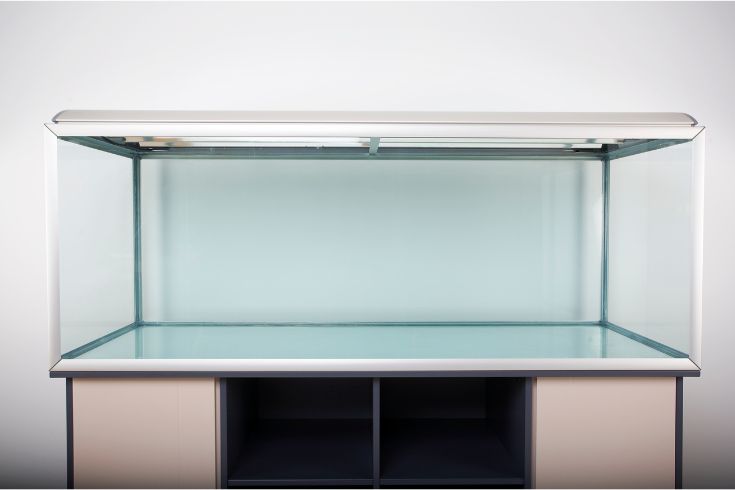
Ideally, you need to allow at least 10 gallons of water per fish or 1 to 2 gallons of water per inch of fish. However, slim-bodied fish do better in an outdoor pond than in a tank.
Q: How to choose the best tank mates for goldfish?
A: Goldfish tank mates should share the same basic water parameters as the goldfish. In addition, I would avoid large, aggressive fish species and those that are so tiny they could make a meal for the goldfish.
I would avoid shrimp, as the goldfish will probably eat them, but larger snail species are handy to have in a goldfish tank, as they graze on algae and eat leftover food and general detritus, helping to keep the tank tidy.
Final Thoughts
Did you enjoy our guide to goldfish social behavior? If you did, please hit the share button above before you go!
Goldfish are not schooling fish, although they generally do best when kept in large groups or shoals. That said, a pair of goldfish can do fine, provided their tank is large enough and well-appointed.
How many goldfish do you have, and what size tank or pond do you keep them in? Tell us in the comments box below!
